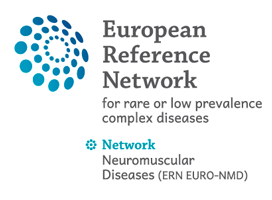Description: Myoclonus–dystonia syndrome is a childhood-onset movement disorder related to mutations in the SGCEgene. Movement-related symptoms usually first appear in childhood or early adolescence, with the development of myoclonus, approximately 50% of patients also developing focal or segmental dystonia. While the myoclonus phenotype of SGCE-myoclonus–dystonia has been extensively assessed in previous studies, the dystonic phenotype has only been evaluated using scales designed for primary generalized dystonia. We will discuss the results of a cross sectional study involving 49 patients, with the purpose of evaluating early focal dystonic features in children and adolescents, potentially aiding in early diagnosis and timely therapeutic approach.
ARTICLE: Early recognition of SGCE-myoclonus-dystonia in children, authored by Correa-Vela, M., Carvalho, J., Ferrero-Turrion, J., Cazurro-Gutiérrez, A., Vanegas, M., Gonzalez, V., Alvárez, R., Marcé-Grau, A., Moreno, A., Macaya-Ruiz, A.; Pérez-Dueñas, B. (2023). Developmental medicine and child neurology, 65(2), 207–214.
https://doi.org/10.1111/dmcn.15298
To register: CLICK HERE
Senior Chair: Dr Jean Pierre Lin, Evelina Children’s Hospital, Guy’s & St Thomas’ NHS Foundation Trust, London
YEPNS Presenter: Dr Horea Chirila, Bucharest, Romania
YEPNS Moderator: Dr Joana Afonso Ribeiro, Coimbra’s Paediatric Hospital, Coimbra’s Hospital and University Centre, Coimbra, Portugal
After registering, you will receive a confirmation email containing information about joining the EPNS Journal Club webinar.

